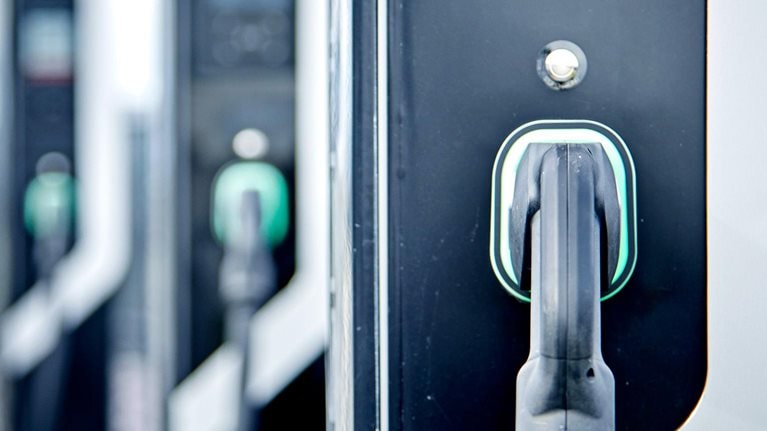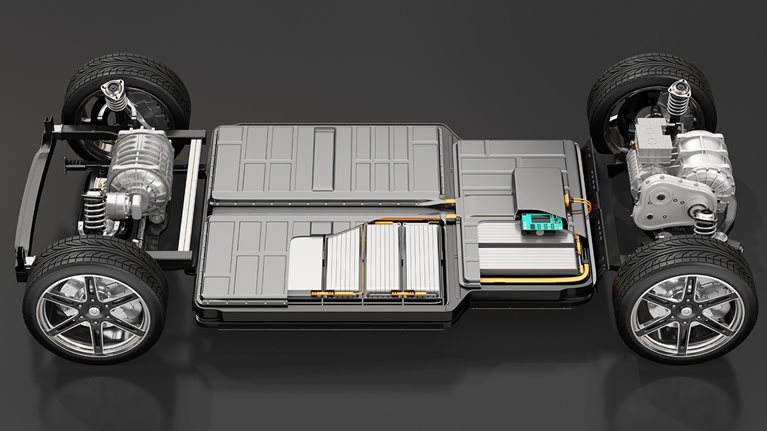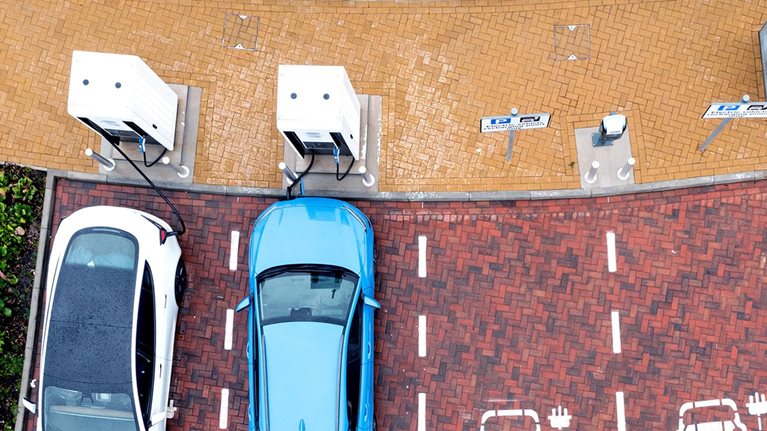This work is independent, reflects the views of the authors, and has not been commissioned by any business, government, or other institution.
Global demand for batteries is increasing, driven largely by the imperative to reduce climate change through electrification of mobility and the broader energy transition. Just as analysts tend to underestimate the amount of energy generated from renewable sources, battery demand forecasts typically underestimate the market size and are regularly corrected upwards. In an earlier publication, a joint 2019 report by McKinsey and the Global Battery Alliance (GBA), and Systemiq, A vision for a sustainable battery value chain in 2030, we projected a market size of 2.6 TWh and yearly growth of 25 percent by 2030. But a 2022 analysis by the McKinsey Battery Insights team projects that the entire lithium-ion (Li-ion) battery chain, from mining through recycling, could grow by over 30 percent annually from 2022 to 2030, when it would reach a value of more than $400 billion and a market size of 4.7 TWh.1

Although battery growth will confer multiple environmental and social benefits, many challenges lie ahead. To avoid shortages, battery manufacturers must secure a steady supply of both raw material and equipment. They must also channel their investment to the right areas and execute large-scale industrialization efficiently. And rather than just greenwashing—making half-hearted efforts to appear environmentally friendly—companies must commit to extensive decarbonization and true sustainability.
Faced with these imperatives, battery manufacturers should play offense, not defense, when it comes to green initiatives. This article describes how the industry can become sustainable, circular, and resilient along the entire value chain through a combination of collaborative actions, standardized processes and regulations, and greater data transparency. By emphasizing sustainability, leading battery players will differentiate themselves from the competition and generate value while simultaneously protecting the environment. The strategies and goals presented here are aligned with both McKinsey’s battery supply chain vision and the GBA’s principles.
Global market outlook for 2030
Global demand for Li-ion batteries is expected to soar over the next decade, with the number of GWh required increasing from about 700 GWh in 2022 to around 4.7 TWh by 2030 (Exhibit 1). Batteries for mobility applications, such as electric vehicles (EVs), will account for the vast bulk of demand in 2030—about 4,300 GWh; an unsurprising trend seeing that mobility is growing rapidly. This is largely driven by three major drivers:
- A regulatory shift toward sustainability, which includes new net-zero targets and guidelines, including Europe’s “Fit for 55” program, the US Inflation Reduction Act, the 2035 ban of internal combustion engine (ICE) vehicles in the EU, and India’s Faster Adoption and Manufacture of Hybrid and Electric Vehicles Scheme.
- Greater customer adoption rates and increased consumer demand for greener technologies (up to 90 percent of total passenger car sales will involve EVs in selected countries by 2030).
- Announcements by 13 of the top 15 OEMs to ban ICE vehicles and achieve new emission-reduction targets.

Battery energy storage systems (BESS) will have a CAGR of 30 percent, and the GWh required to power these applications in 2030 will be comparable to the GWh needed for all applications today.
China could account for 45 percent of total Li-ion demand in 2025 and 40 percent in 2030—most battery-chain segments are already mature in that country. Nevertheless, growth is expected to be highest globally in the EU and the United States, driven by recent regulatory changes, as well as a general trend toward localization of supply chains. In total, at least 120 to 150 new battery factories will need to be built between now and 2030 globally.
In line with the surging demand for Li-ion batteries across industries, we project that revenues along the entire value chain will increase 5-fold, from about $85 billion in 2022 to over $400 billion in 2030 (Exhibit 2). Active materials and cell manufacturing may have the largest revenue pools. Mining is not the only option for sourcing battery materials, since recycling is also an option. Although the recycling segment is expected to be relatively small in 2030, it is projected to grow more than three-fold in the following decade, when more batteries reach their end-of-life.

Companies in the EU and US are among those that have announced plans for new mining, refining, and cell production projects to help meet demand, such as the creation or expansion of battery factories. Many European and US companies are also exploring new business models for the recycling segment. Together, these activities could help localize battery supply chains.
Today’s value chain challenges
The global battery value chain, like others within industrial manufacturing, faces significant environmental, social, and governance (ESG) challenges (Exhibit 3). Together with GBA members representing the entire battery value chain, McKinsey has identified 21 risks along ESG dimensions:
- Environmental: The extraction and refining of raw materials, as well as cell production, can have severe environmental effects, such as land degradation, biodiversity loss, creation of hazardous waste, or contamination of water, soil, and air. Unprofessional or even illegal battery disposal can cause severe toxic pollution. This is a problem within today’s lead-acid battery value chain.
- Social: Unless strictly managed, operations across the battery value chain could have unfavorable effects on regional communities through violations of labor laws, child and forced labor, and indigenous rights, especially in emerging markets.
- Governance: Businesses in the battery value chain may encounter conflicts of interest or other companies with subpar management practices. To meet longstanding expectations for ethical businesses, companies must avoid financial situations involving corruption, bribery, funding armed conflicts, and tax evasion.

To conduct business in a socially and ecologically responsible way, it is crucial for stakeholders in the battery value chain to consider and address these ESG risks. (See sidebar, “Industry perspectives on sustainability” for more information on priorities). Success will likely depend on deploying sufficient resources as well as greater transparency and better mitigation measures—regulations and early planning could help ensure that companies alleviate risks along the entire value chain. Further, compliance and corporate risk will have to include ESG issues in their operational risk-management practices and processes to tackle them holistically. Many companies, however, still see mastering ESG as a cost and a burden. We strongly believe they need to embrace this challenge and view it as one of the greatest business opportunities of the century. It’s time to stop playing defense and start playing offense.
Besides the much-publicized ESG challenges, GBA members have pointed out that the battery value chain confronts massive economic barriers (Exhibit 4). Historic price peaks and extreme volatility, as well as quickly changing national regulations, can massively affect the economic viability of projects. Higher battery prices also make some green applications far less attractive than they were previously, which could delay much-needed attempts to accelerate decarbonization. Although economic viability is the most urgent issue for leaders, a more complex challenge involves the industrialization and historic scale-up of the battery industry.

Dealing with shortages
Shortages of manufacturing equipment, construction material, and the skilled labor required to ramp up production are a few reasons why many battery-cell factories experience significant delays. Vertical supply-chain integration and long-term contracts, as well as greater collaboration, could mitigate some of these issues. Additionally, open dialogue and education with local communities and stakeholders are likely key to achieving more widespread acceptance and support for the battery industry.
The metals and mining sector will supply the high quality raw materials needed to transition to greener energy sources, including batteries. If companies can provide sustainable materials—those with a low CO2 footprint—they might capture a green premium, since demand is ramping up for such products. It may be difficult to provide sustainable materials in the quantities needed to meet demand, however.
Producers and purchasers could mitigate potential shortages of raw materials by redefining their strategies and operations to be economic, transparent, sustainable, and circular. For instance, producers need to build or re-create a growth agenda based on economic viability to ensure execution. Further, they need to strive for continuous innovation in productivity and decarbonization of operations while simultaneously pursuing diverse partnerships that will embed them in downstream supply chains. Purchasers, on the other hand, must adapt technology rollout plans—for instance, by increasing flexibility regarding battery technologies and raw-materials requirements—and accelerate innovation on product design and material usage. They must also send clear signals about long-term demand. to decrease the uncertainties about market size that often deter producers from undertaking multi-billion dollar mining and refining projects, which often have 20 to 30 year lifetimes.
Would you like to learn more about the Battery Accelerator Team?
Purchasers should aim for strategic-green-procurement excellence by identifying potential mines and refineries across different geographies and then assess their volume, quality, environmental impact (looking not just at greenhouses gases but all planetary boundaries). It will also be important to evaluate the societal risks involved in securing an adequate supply. Last, the entire value chain needs to step up their game in enabling true circularity with tight loops like life extension, rather than just the wide loop of recycling.
This article and the underlying data and analytics can help promote better planning by the relevant stakeholders in the private and public sectors, as well as by investors. These stakeholders require a reliable fact-base and transparency on raw-material demand and supply imbalances to de-risk their investments.
Batteries require a mix of raw materials, and various pressures currently make it difficult to procure adequate supplies. McKinsey’s MineSpans team, which rigorously tracks global mining and refining capacity projects, has created several future scenarios based on available information. The base-case scenario for raw-material availability in 2030 considers both existing capacity and new sources under development that will likely be available soon. The team’s full potential scenario considers the impact of pipeline projects that are still in the earlier stages of development, as well as the effect of technology innovation and the potential addition of new mining and refining capacity.
While some battery materials will be in short supply, others will likely experience oversupply, making it more difficult to plan. The success factors for ensuring a sufficient global supply include obtaining greater transparency on supply and demand uptake, proactively identifying the need for new mining and refining capacities to avoid bottlenecks, channeling investments into new capacity, and improving investment returns and risk management.
Almost 60 percent of today’s lithium is mined for battery-related applications, a figure that could reach 95 percent by 2030 (Exhibit 5). Lithium reserves are well distributed and theoretically sufficient to cover battery demand, but high-grade deposits are mainly limited to Argentina, Australia, Chile, and China. With technological shifts toward more lithium-heavy batteries, lithium mining will need to increase significantly. Meeting demand for lithium in 2030 will require stakeholders to strive for the full potential scenario, which factors in the impact of almost every currently announced project in the pipeline and will require significant additional investment in mining projects. The full potential scenario also involves putting greater emphasis on smart product technology choices, such as the use of silicon anodes instead of Li-metal.

Nickel reserves are dispersed across various countries, including Australia, Canada, Indonesia, and Russia (Exhibit 6). In our base scenario, there would only be a small shortage of nickel in 2030 because of the recent transition to more lithium iron phosphate (LFP) chemistries and plans to increase mining capacity. Although McKinsey’s full potential scenario projects a significant oversupply of nickel if stakeholders achieve their planned mining and refining potential, companies could still have difficulty acquiring sufficient quantities because of quality requirements (for instance, the need for class 1 nickel rather than class 2 nickel in the form of ferroalloys) and the limited geographic distribution of mines. No matter how supply evolves, the industry will need to consider one critical question: How to find sustainable nickel for batteries? In answering this question, companies must consider CO2 intensity differences across assets.

Approximately 75 percent of today’s mined cobalt originates from the Democratic Republic of Congo (DRC), largely as a by-product of copper production (Exhibit 7). The remainder is largely a by-product of nickel production. The share of cobalt in batteries is expected to decrease while supply is expected to increase, driven by the growth in copper mining in the DRC and of nickel mining, primarily in Southeast Asia. While shortages of cobalt are unlikely, volatility in supply and price may persist because it is generally obtained as a by-product.

Supply of manganese should remain stable through 2030 since no announcements of additional capacity are expected (Exhibit 8). Demand for manganese will likely slightly increase and, thus, our base scenario estimates a slight supply shortage. The industry should be aware that some uncertainty surrounds manganese demand projections because lithium manganese iron phosphate (LMFP) cathode chemistries could potentially gain higher market shares, especially in the commercial vehicle segment.

Mitigating emissions
Battery electric vehicles (BEVs) often are criticized for their greenhouse-gas footprint throughout their life cycle. However, although results vary significantly depending on factors such as milage, production, and electricity grid emissions, our models clearly indicate that BEVs are the most effective decarbonization option for passenger cars.
Our calculations show that total emissions are much lower today for BEVs than vehicles with internal combustion engines (ICE), because BEVs emit lower emissions during the use phase (the time that vehicles are on the road) (Exhibit 9). In the worst case scenario, with no low-carbon electricity, total life-cycle emissions for BEVs are about 50 percent lower in Europe and 72 percent lower in the United States compared with ICE vehicles. Once recharged with low-carbon electricity during the use phase, BEVs achieve even better life-cycle carbon footprints than ICE vehicles, with about 77 percent lower emissions in Europe and 88 percent lower emissions in the United States. Although BEVs are superior in life-cycle emissions, their material and manufacturing emissions per vehicle are double those of ICE vehicles. These greenhouse-gas emissions before the use phase are responsible for 40 to 95 percent of total life-cycle emissions of BEVs, depending on the grid electricity used for charging. Decarbonizing production, primarily for battery, aluminum and steel, is therefore much more critical for BEVs than it has been for ICEs.

In the next five to seven years, ambitious players might cut the carbon footprint of battery manufacturing by up to 90 percent, but this would call for changes throughout the whole value chain.
Different tactics can aid in abatement. In the best-case scenario, some of these would result in cost savings, while others would entail large expenditures. Under the most beneficial circumstances, companies might potentially decarbonize up to 80 percent of emissions at a minimum additional cost (Exhibit 10). The site of manufacturing and the intended market, including its carbon price, customer demand, and willingness to pay potential green premiums, will help determine how cost competitive low-carbon batteries may be.

The most effective decarbonization levers include the use of circular materials and low-carbon electricity. Their economic attractiveness may vary, however, primarily because of local issues, such as electricity feed-in-tariffs, subsidies, and available materials.
Technological advances
Some recent advances in battery technologies include increased cell energy density, new active material chemistries such as solid-state batteries, and cell and packaging production technologies, including electrode dry coating and cell-to-pack design (Exhibit 11).

When making investments decisions, battery manufacturers could find these rapid advances challenging. After choosing the battery technology that fits their application needs best, they should then quickly secure the required raw material upstream, acquire the capable machinery mid-stream to suit the battery chemistry and application, and recruit the indispensable talent required for those projects.
The uncertainty about cell technologies and form factors supplied by different producers also imposes significant complexity costs and risks to the after-sales, repair, and maintenance of batteries. Vehicle OEMs need to ensure that EV battery modules and packs can be replaced at a low cost long after the typical eight-year warranty period.
To manage uncertainty, battery cell manufacturers need to plan their target investments carefully and scout for external funding opportunities, such as green bonds or subsidies in relevant regions. Simultaneously, they should accomplish several other important tasks: plan their manufacturing plants, optimize short- and long-term costs to ensure agility and adaptability of production lines, and steer investments into new technologies.

Unlocking growth in battery cell manufacturing for electric vehicles
Battery 2030: resilient, sustainable, and circular
The 2030 outlook for the battery value chain depends on three interdependent elements (Exhibit 12):
- Supply-chain resilience. A resilient battery value chain is one that is regionalized and diversified. We envision that each region will cover over 90 percent of local cell demand, over 80 percent of local active material demand, and over 60 percent of refined materials demand. In addition, by recycling raw materials that are primarily found in one location (such as cobalt), countries can reduce their dependency on others. A recycling target of 80 percent, as recently specified in the EU battery directive, could become an aspiration for 2030 for all regions globally. Across the entire value chain, the industry could contribute to up to 18 million jobs in 2030 by securing existing positions and creating new ones. The number of projected jobs—80 percent higher than in our 2019 report—relates to the higher expected battery demand estimates for 2030.
- A focus on sustainability. Batteries are a major tool in the challenge to decarbonize the mobility sector and other industries—a task that is essential to avoid triggering irreversible climate tipping points. The battery revolution could reduce cumulative greenhouse-gas emissions by up to 70 GtCO2e between 2021 and 2050 in the road transport sector alone. However, the battery industry will need to prioritize the decarbonization of its own industry to maintain its credibility. Our analysis suggests that material and manufacturing emissions could fall 90 percent per kWh battery on the cell level by 2030. Further pack level emissions will mostly depend on achievements in decarbonizing aluminum, steel, and plastic production. The industry could also benefit from setting ambitious improvement targets in the nine planetary boundaries that the Stockholm Resilience Center defined and quantified. These include freshwater change, stratospheric ozone depletion, atmospheric aerosol loading, ocean acidification, biogeochemical flows, novel entities, land-system change, biosphere integrity, and climate change. Significant improvements for all social and governmental challenges mentioned earlier are also necessary to achieve true sustainability.
- Creation of a circular value chain. The battery industry has to move from a linear to a circular value chain—one in which used materials are repaired, reused, or recycled. This transformative approach may also create huge economic potential, with some opportunities already available today (for instance, scrap recycling). A large cross-industry effort and coordination will be needed for stakeholders to achieve the full potential of a circular value chain. Companies could benefit from investigating sustainable and economically viable applications that would increase circularity, or by leveraging technological advances that contribute to this goal.

At a minimum, the battery industry’s growth must help fulfill basic human, product, and economic needs. Important goals include social welfare, inclusive value creation, adherence to international law, emphasis on human rights, creation of durable and performing products, and economic viability for businesses. To create a well-functioning value chain, companies should attempt to avoid any shortcomings in these areas. For sustainability, the battery industry can only achieve true sustainability if it does not overshoot any of the nine planetary boundaries that the Stockholm Resilience Center defined and quantified.
Based on our extensive experience in the global battery value chain, we have identified ten transformational success factors that will pave the way for our 2030 vision in which batteries power a resilient, sustainable, and circular future (Exhibit 13).

Establishing value chain circularity. Achieving circularity along the entire value chain could increase resilience against supply shortages and price volatility. It will also mitigate risks related to battery-waste disposal. Companies could gain additional value by adopting circular business models, such as battery as-a-service or mobility as-a-service, repair, refurbishment and second-life applications. If none of these options is available, then battery recycling is essential. Circularity will necessitate cross-industry collaboration and partnerships, as well as data transparency and harmonized standards.
Increasing energy efficiency and electrification share. Most large-scale battery factories that will be operational in 2030, and for many years beyond, are now being built. As such, mastering energy efficiency—for instance, via building insulation or heat recovery—is key.
Minimizing environmental impacts beyond climate A truly holistic approach will have to go far beyond producing low-carbon batteries. Stakeholders will have to take into account other planetary boundaries to ensure the global battery industry has a truly positive environmental impact along the entire value chain. Adhering to the 2022 Kunming-Montreal biodiversity agreement (which includes a target to protect 30 percent of Earth’s surface by 2030) is especially important as it is a landmark in the global effort to safeguard natural habitats. It can be viewed as the equivalent to the Paris agreement for fighting climate change.
Creating positive, just, and inclusive social impact. By ensuring health, safety, fair-trade standards, human rights, and inclusive dialogues, the battery industry could provide a positive impact on many local communities around the globe as it scales up. The GBA has published various rulebooks on these dimensions.
Sourcing 24/7 low-carbon electricity and heat. A 2022 report by the Long Duration Energy Storage Council and McKinsey showed that traditional clean power purchase agreements only enable a 40 to 70 percent decarbonization of buyers’ electricity consumption while exposing them to market price risks stemming from renewables variability. Companies might achieve better results with time-matched green energy solutions, enabled by long-duration storage technologies, which can help match supply and demand for electricity and heat during every hour of the year. The battery industry could become a frontrunner in accelerating deep decarbonization of the grid, despite its additional energy demand, if companies procured time-matched clean energy to meet all their needs.
Establishing full supply-chain transparency and compliance. Data availability and transparency are fundamental requirements to ensure that the industry achieves its growth and ESG targets. This will require harmonized, credible, and trusted data. The Global Battery Alliance’s Battery Passport may be a resource here.
Embracing technology innovation and flexibility. For cell manufacturers and OEMs to become leaders in technology, process optimization, and modularity, they could aim to understand market dynamics, be flexible, and adopt promising innovations.
Securing raw material and machinery supply. Companies could explore long-term agreements, and co-funding, acquisition, and streaming arrangements with raw material and equipment machinery companies to ensure adequate supplies. This might help avoid supply shortages in construction materials, skilled labor, and machinery and thus mitigate the significant delays that often occur in new production capacity projects today. Further, companies could consider securing access to capital, rigorously plan and execute complex permitting processes, and navigate import and export bureaucracy to ensure a scheduled execution.
Excelling in cost and regional execution. There have been tremendous improvements in battery costs, manufacturing efficiency, and required capital expenditures over the past decade. Companies will need to continue excelling in these dimensions to remain competitive.
Harmonizing international standards and regulations. Diverging manufacturing standards and local regulations increase costs and pose barriers to faster scale-ups. GBA members see harmonization as one of the most critical goals to achieve around the globe. Private-public partnerships, as well as industry alliances, could help significantly in orchestrating the alignment process by fostering dialogue in multi-stakeholder environments.
In many respects, the current battery industry still acts as a linear value chain in which products are disposed of after use. Circularity, which focuses on reusing or recycling materials, or both, can reduce GHG intensity while creating additional economic value (Exhibit 14).

A circular battery value chain can effectively couple the transport and power sectors and is a foundation for transitioning to other sources of energy, such as hydrogen and power-to-liquid, after 2025 to achieve the target of limiting the increase in emissions to 1.5° C above pre-industrial levels. Despite the accelerated emphasis on sustainability during the COVID-19 pandemic, global CO2 emissions reached an all-time high in 2021 and 2022—meaning that just over six years are left before the 1.5°C carbon budget is depleted. This requires the highest urgency to act.
Current regulations encourage circularity, and a shift to this model could bring many benefits. For instance, companies would encounter fewer supply bottlenecks resulting from the limited availability of raw materials. Circularity could benefit the environment since companies would less frequently engage in virgin raw material mining and refining. On the financial side, companies might capture additional value if they reuse raw materials contained in end-of-life batteries.
Digital technology could increase circularity by providing the transparency and data management required to create an efficient ecosystem in which batteries and critical materials can be traced through end-of-life.
Improving recycling
Battery manufacturers may find new opportunities in recycling as the market matures. Companies could create a closed-loop, domestic supply chain that involves the collection, recycling, reuse, or repair of used Li-ion batteries. The recycling industry alone could create a $6 billion profit pool by 2040, by which time revenue could exceed $40 billion—more than a three-fold increase from 2030 values (Exhibit 15).

Current recycling business models are costly and heavily dependent on various factors, including battery design, process quality, and shifts in market supply or raw-material demand. In addition, operational challenges, such as limited access to battery materials, inefficient processes, and low yields resulting from immature technologies, remain persistent problems in the recycling sector.
Regulatory incentives, as well as corporate sustainability goals, provide companies with strong reasons to improve their recycling efforts by optimizing access to feedstock, technological processes, and strategic partnerships throughout the battery value chain. Companies could also improve recycling by drawing on knowledge gained from lead acid battery recycling.
Regional variations in the value chain
Value chain depth and concentration of the battery industry vary by country (Exhibit 16). While China has many mature segments, cell suppliers are increasingly announcing capacity expansion in Europe, the United States, and other major markets, to be closer to car manufacturers. Partially because of recent regulatory changes, these new locations could provide almost 40 percent of global capacity in 2030. Although current globally-announced nameplate capacity of Li-ion cell factories exceeds our market demand projections, there are several reasons why it will likely remain a supplier’s market with temporary supply bottlenecks: not all announced projects will be executed, not all will operate at full capacity, and many will be delayed. Further, battery cells are not sold on a free-floating spot market but via long-term supplier contracts. Despite rising local demand, China will likely continue to have significant overproduction capacity, while Europe and North America might not be able to meet their own local demand for cell production.

Although companies in many locations are still announcing new capacity, local growth comes with challenges. Management of the upstream supply chain will remain critical given the nature of regional raw material availability. Players in the battery value chain who want to localize the supply chain could mitigate these risks through vertical integration, localized upstream value chain, strategic partnerships, and stringent planning of manufacturing ramp-ups.
The battery value chain is facing both significant opportunities and challenges due to its unprecedented growth. It is probably one of the most ambitious scaling and ESG transformations that this highly complex and global product value chain has seen. It will require stringent efforts, cross-industry collaboration, technological disruptions, public-private-partnerships and increased research activities to succeed. If mastered, however, the industry scale-up will potentially create more than $400 billion in value-chain revenues by 2030, contribute to up to 18 million jobs along the entire value chain and around 70 GtCO2e avoided cumulative road transport emissions from 2021 to 2050.
We strongly believe that a resilient, sustainable, and circular global battery value chain is not only possible but also admirable to achieve sustainable inclusive growth.


